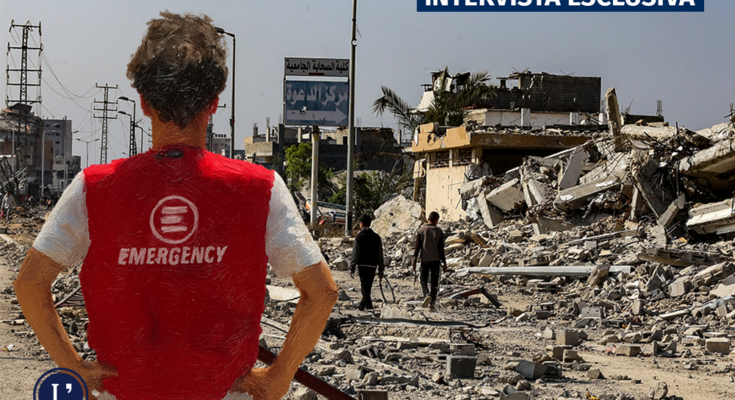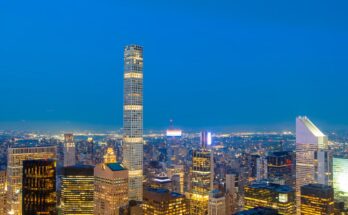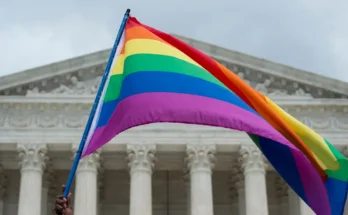As the US-brokered ceasefire falters due to repeated attacks and violations by Israel, the humanitarian situation in the Gaza Strip continues to worsen. Emergency has been present in Gaza since August 2024 and manages various projects, such as a clinic in the Khan Younis area, and offers basic health services in a field clinic located in the al-Mawasi area. We contacted Alessandro Lavorati, project manager, by phone Emergency in Gaza since March 2025, with whom we discussed the humanitarian conditions facing the Gaza Strip today.
What is the humanitarian situation in the Gaza Strip after the “peace” agreement?
There is 54% of the Gaza Strip still occupied by the IDF, where explosions are constantly heard and buildings collapse. In addition, there was regular aerial bombardment. Since the beginning of the ceasefire there has been maximum escalation for several days, where military activity also expanded to 46% of the area that was supposed to be the IDF withdrawal area. At that time there was a targeted drone attack, even one kilometer from our house. So calling it “peace” is completely inaccurate and calling it a “ceasefire” is hyperbole.
In occupied territories, are military actions aimed only at destroying infrastructure, or are there also civilian casualties?
There were also civilian casualties. The Israeli army has drawn a “yellow line” to demarcate the areas where you can stay and the areas you cannot enter. But if a Palestinian approaches the line, he will be attacked. Civilians died on the first day of the ceasefire, when the line was lower. They were hit by a tank. During the most recent escalation, there were one hundred deaths in twenty-four hours, including about sixty children. This is between areas that are supposed to be “free” and those that are still occupied. The point is that you can’t declare a ceasefire and then shoot anyone who approaches even a vague line. Protection of civilians is non-existent.
Since October 11, the day after the ceasefire was signed, have you seen any movement of people northward, towards Gaza City?
The first few days, yes, there was the first wave of people trying to return to Gaza City. But then many stop: they see that all they have to do is get close to the yellow line to be hit. Now, after a month, most people are no longer active. They didn’t believe it, they thought the ceasefire wouldn’t hold. They live in the fields, in tents. There is a lot of waiting and little trust.
What are the conditions in the refugee camps?
Living conditions are very bad. Refugee camps are overcrowded, lacking basic services and hygiene supplies. There are persistent skin, respiratory and urinary tract infections. People live in small tents with as few as ten family members, without sturdy roofs, and are exposed to bad weather. The weather is still hot but the humidity is very high and winter is coming soon. This is a very difficult condition.
Regarding food, have you seen more aid, more groceries?
Very little aid has flowed since the ceasefire began. We have to differentiate: there is humanitarian aid and commercial aid. Of the humanitarian aid, only one-sixth of what was promised in the agreement has arrived. There is still a large shortage of medicines and shelter materials. The food to be distributed to residents came in very small quantities. On the contrary, more commercial trucks are coming in and more food is visible on the market now than in the summer. But most of the population does not have the economic means to buy these goods: prices are no longer as high as they were in August -100 euros for a kilo of flour – but more than 60% of the population is unemployed. This is a big pressure exerted by NGOs: people need food without spending money.
How will the small amount of income coming in be managed? Are there still incidents of humanitarian trucks being looted?
Yes, it still happens. That happened the last few days too. The problem was 300 trucks had to come in and two came in, people organized themselves to go and take what they could. Morally, this isn’t “right,” but it’s logical: if you throw two sandwiches into a room of a hundred hungry people, it’s natural that they’ll struggle to get them. When, soon after the ceasefire, it appeared that aid would return regularly, the looting stopped. But after ten, fifteen days, seeing that the situation had not changed, everything returned to how it was before.
Medically, what is the situation?
Everything was still missing: gauze, antibiotics, anesthetic, operating room materials. There are no commercial trucks full of drugs coming in: it’s all black market. If something costs 10 in Italy, here you pay 1,000 if you find it. And often these materials are left in warehouses or stolen.
How many cases of severe malnutrition do you see?
In October we recorded around 70 children under the age of five who were malnourished. We only deal with that age group. They were mostly poor families who couldn’t afford anything. Malnutrition takes time to recover, so no improvement has been seen yet.
What is the general mood of society?
Everyone walks on egg shells. There is a desire to be optimistic, but also afraid of deceiving yourself. People come in standbyhe observed. I mostly chat with colleagues who have a salary, and also live barely. They enjoy the little things: those who manage to smoke again after months, those who discover coffee. It wasn’t a big step – they didn’t return to their homes – but a small sign of normality. However, caution is still required. I want to say one more thing. I saw a huge protest movement from Italy, and I know there is a lot of controversy about its use. From this we can say that it works. Immediately following the protests, the Italian government resumed medical evacuation flights to Italy, which had been suspended. For Palestinians, knowing that people in Italy were protesting had a huge impact: many told us they had seen it and felt supported. We must not lose attention today, faced with the idea that there is peace: because there is no peace, there is only a partial and fragile ceasefire. But there is still hope, and it’s not just idealism: in these six months I’ve seen people who, despite everything, lived — they played cards under the hood, fell in love, had children, studied for high school exams. This is normal, but important. Often we imagine Palestinians as passive victims, as people who have nothing to do but flee or die. It is true that they suffer, but they continue to live. It’s important to say: even in the most difficult times, normalcy cannot be tolerated.





